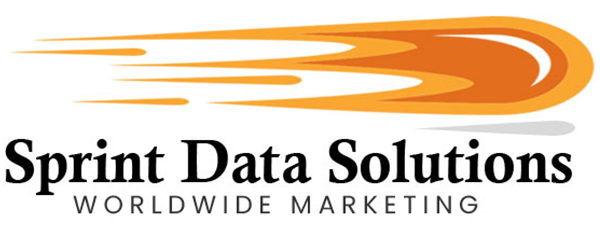Trike Owners Are A New & Growing Market
America, as far as nations go, is relatively young, and that youth has allowed it to grow alongside modern technological and cultural shifts rather than having to retrofit older systems. One of the most profound developments shaped by this forward-looking foundation is the country’s vast, interconnected network of streets, roads, and highways. Unlike older nations with winding, historically constrained routes, the U.S. was able to implement modern infrastructure on a national scale—roads designed for personal vehicles, and later, for long-distance commercial and recreational travel. For generations, this accessibility has made motor vehicle travel a cornerstone of American life, from daily commutes to iconic cross-country adventures. Among the most enduring and recognizable symbols of that freedom is the motorcycle—a machine that has represented independence, mobility, and the open road for decades.
However, the face of that freedom is evolving. A new contender has emerged alongside the motorcycle: the motor trike. With three wheels for added stability and comfort, the trike appeals to a broader and more diverse group of riders, including those who may have been deterred from two-wheel riding due to physical limitations, balance concerns, or safety preferences. Trikes retain the spirit of motorcycle travel while offering a more accessible and often more luxurious experience. For businesses, this is more than just a trend—it’s a burgeoning market segment filled with customers who are not only passionate about their vehicles but also eager to invest in accessories, gear, services, and travel experiences that cater to their unique needs. Sprint Data Solutions Worldwide Marketing has already positioned itself at the forefront of this demographic shift, offering targeted data and marketing support to help companies reach these new, motivated consumers with precision and effectiveness.

What Is A Trike Motorcycle?
As the name suggests, a trike motorcycle maintains the basic riding principles of a traditional motorcycle but features a three-wheel configuration instead of the conventional two. This extra wheel adds stability and changes the riding dynamics, offering options for different rider needs. Trikes can be designed with two wheels in the front and one in the back—often called a “reverse trike”—or with the more traditional layout of one wheel in the front and two at the rear. Both designs offer unique advantages: reverse trikes typically provide improved handling and braking, while rear twin-wheel designs offer greater cargo capacity and a more classic cruiser look. The concept of a motorized tricycle is far from new; variations date back to the 19th century, when early inventors experimented with multiple vehicle layouts before the automobile and motorcycle formats became dominant. However, interest in trike motorcycles saw a sharp resurgence in the early 21st century, driven largely by custom builders who began converting traditional motorcycles into three-wheeled versions to improve balance and rider comfort—especially for aging or disabled riders. The trend became so popular that in 2009, Harley-Davidson launched its own factory-built trike model, the Tri Glide Ultra Classic, marking a significant shift from trikes being niche custom builds to legitimate, mainstream motorcycle options. Other manufacturers soon followed suit, recognizing that trikes appeal to a growing market segment seeking the thrill of motorcycling with greater safety, comfort, and storage space. As a result, while two-wheeled motorcycles still dominate the industry, trikes now represent a fast-growing niche in the motorcycle community, embraced by everyone from touring riders to veterans and mobility-challenged enthusiasts.
The Trike Difference
Trikes, or three-wheeled motorcycles, were never just about style or making a bold fashion statement. Their defining feature—the third wheel—serves a much more practical purpose: enhanced stability. With two wheels at the rear or front, trikes remove the need for riders to balance the vehicle manually, unlike traditional two-wheeled motorcycles. This fundamental change allows a trike to remain upright even at a standstill, similar to a car. That increased stability opens the door for a broader range of riders, especially those who might not feel comfortable managing the balance demands of a standard motorcycle.
Originally, trikes emerged from small custom shops and independent builders rather than large manufacturers. These early adopters were typically motorcycle enthusiasts who, due to aging, injury, or disability, could no longer safely operate two-wheel bikes. Despite their limitations, these individuals still longed for the wind-in-your-face freedom and thrill that motorcycles provided. Trike conversions offered them a solution—a way to remain part of the motorcycle culture without sacrificing safety or control. In addition to enabling long-time riders to stay on the road, trikes also began to attract newcomers, especially those unfamiliar or uneasy with balancing on two wheels. With easier handling, no need to “put a foot down” at stops, and a more secure feel on the road, trikes offered a gentler learning curve while still preserving the exhilaration of an open-air ride.
Over time, what started as a niche solution for aging or differently-abled riders grew into a thriving segment of the motorcycle market. As demand increased, major manufacturers like Harley-Davidson and Can-Am took notice, launching their own factory-built trike models with modern features and engineering improvements. These vehicles didn’t just serve existing riders—they expanded the market by welcoming people who had never considered motorcycles before. Some trikes, such as the Polaris Slingshot, even blur the lines between motorcycles and sports cars, featuring side-by-side seating, steering wheels, and cockpit-style designs. Despite being legally classified as motorcycles in many jurisdictions, their unique configuration and driving experience continue to challenge conventional definitions of what a motorcycle can be.
In essence, trikes represent more than just a design tweak—they symbolize inclusivity, innovation, and the broadening of what motorcycle riding can mean. Whether it’s a retiree looking to continue weekend rides or a first-time rider who wants stability without compromising style or speed, trikes offer a new way forward, and the industry is finally catching up to what small builders recognized long ago: that freedom on the road should be available to everyone.
Who Is The Market?
The people who ride trikes often overlap with the traditional motorcycle demographic—enthusiasts who value the freedom of the open road, enjoy the sense of community among riders, and appreciate the engineering behind two- or three-wheeled vehicles. However, the trike market is also expanding significantly, welcoming a broader range of users. One of the key drivers of this growth is accessibility. Trikes provide increased stability and balance, making them ideal for older riders who may have physical limitations or mobility concerns but still want to enjoy the riding lifestyle. They are also popular among individuals with disabilities who are unable to safely operate a two-wheeled motorcycle. Additionally, many first-time riders who may be intimidated by the learning curve of traditional motorcycles find trikes to be a safer and more approachable alternative. Couples and long-distance travelers also gravitate toward trikes due to their enhanced storage capacity and comfort features. As a result, the trike market is now composed not only of seasoned motorcycle veterans but also of new riders, aging riders, and those seeking more practical or physically accommodating ways to enjoy motorcycling.
Elderly Riders
Trikes were originally developed to meet the needs of older riders and individuals with mobility limitations, and that market remains not only strong but steadily growing. Motorcycles have long been a symbol of freedom and individuality in American culture, with countless riders forming a deep bond with the road over decades. Many of today’s senior citizens were once avid motorcyclists, but the natural effects of aging—such as reduced strength, balance issues, arthritis, and joint stiffness—can make riding a traditional two-wheeled motorcycle increasingly difficult or even dangerous. Trikes offer a compelling alternative by eliminating the need for balancing and counter-steering, while still delivering the exhilarating, open-air experience that riders cherish.
What’s emerging now is a powerful and distinct demographic: aging motorcycle enthusiasts who refuse to give up the lifestyle but require safer, more accessible options. This shift is creating fertile ground for businesses to cater to this group with specialized products and services. From trikes with upgraded suspension and ergonomic seating to adaptive gear like easy-grip handlebars, back supports, and compression wear, the possibilities are broad. There is also increasing demand for senior-friendly motorcycle tours, rider safety courses tailored to older adults, and even communities or clubs focused on connecting senior trike riders. For marketers and manufacturers, this is not just a niche—it’s a loyal, experienced, and passionate customer base with strong buying power and a desire to keep riding well into their golden years.

Disabled Riders
Some physical disabilities can make driving traditional vehicles impossible—total blindness, for example, completely rules out safe operation. However, many other individuals with disabilities, such as wheelchair users, amputees, or those with limited lower body mobility, can still enjoy vehicle operation with the right adaptations. While motorcycles demand significant physical coordination, balance, and strength, motor trikes open the door to a much broader range of riders, including those with serious mobility challenges. Trikes offer the core thrill of motorcycle riding—freedom, open air, and road connection—without requiring the constant balance and agility that two-wheeled bikes demand.
One of the greatest advantages of motor trikes is their accessibility. Like older riders who seek a safer, more stable ride, individuals with disabilities benefit from the three-wheeled design that removes the need for balance at stops and eliminates the risk of tipping over. Additionally, motor trikes can be extensively modified to meet the needs of the rider. Everything from foot controls to gear shifting, braking, and acceleration can be relocated to the handlebars, allowing individuals with partial or full lower-limb impairment to ride independently. Even automatic transmission systems can be added for those who need to eliminate manual shifting altogether. These adaptive modifications make motor trikes an empowering alternative, offering disabled riders the same sense of independence, adventure, and personal freedom that motorcycles have always symbolized.
People Who Don’t Like Motorcycles
A fascinating shift in the motor trike market is the emergence of a new kind of rider—individuals who may have never considered owning or operating a traditional motorcycle. These are people who may feel apprehensive about the physical balance, skill demands, and perceived risks associated with two-wheeled motorcycles, yet find motor trikes to be a more comfortable and accessible alternative. With their inherent stability due to the three-wheel design, motor trikes offer a safer and more user-friendly experience. Many newer models even feature automotive-style controls, such as a steering wheel and bucket seating, further lowering the barrier for entry. These trikes often resemble sporty three-wheeled convertibles and, in many jurisdictions, still require a motorcycle license rather than a standard driver’s license—an interesting regulatory nuance that can shape both the appeal and the marketing strategy around them.
This expansion of the user base goes beyond just new riders—it changes the entire demographic landscape. The motor trike is increasingly being embraced by older adults, riders with physical limitations, women, and even car enthusiasts who are intrigued by the hybrid-like driving experience. This diversification opens up exciting new opportunities for businesses that previously targeted a more niche motorcycle crowd. Accessories, apparel, safety gear, maintenance services, and even travel packages tailored to this wider audience are now more viable than ever. This is precisely where Sprint Data Solutions Worldwide Marketing becomes invaluable. With access to detailed, customizable data lists and targeted marketing strategies, Sprint helps businesses reach these emerging consumer groups effectively. By identifying and engaging this broader base of motor trike users, companies can offer more relevant products, services, and experiences—ultimately driving growth in a market that’s shifting into high gear.
Who Is Sprint Data Solutions Worldwide Marketing?
Sprint Data Solutions Worldwide Marketing is a proudly American-owned and operated company, born from the vision of a disabled veteran determined to make a lasting economic impact. After completing military service and returning to civilian life, the founder made a deliberate decision to shift from defending the country to driving its growth through entrepreneurship. The goal was clear: empower American businesses by helping them reach and retain their most critical resource—customers. With a foundation rooted in integrity, service, and innovation, the company began in Las Vegas, Nevada, providing marketing support to local businesses and steadily building a reputation for reliability and performance.
From its inception, Sprint Data Solutions Worldwide Marketing placed an uncompromising emphasis on quality and customer service. These core values fueled organic growth and a loyal client base, enabling the company to expand beyond its local roots. What began as a small local business now features a seasoned team with over 50 years of combined expertise in the marketing and promotions industry. This deep reservoir of experience is reflected in every service the company offers, from strategic consulting to full-service campaign execution.
The company entered the marketing sector during a transitional era, when traditional channels like television, print, and radio advertising still dominated. Sprint Data Solutions initially specialized in direct mail, which required meticulous skills in data acquisition, organization, and analytics—skills that would become even more valuable in the digital age. As digital marketing rapidly gained traction and disrupted the industry, Sprint Data Solutions was well-positioned to pivot. Thanks to its strong foundation in data-driven practices, the company quickly integrated digital solutions into its offerings, securing an early-mover advantage that benefited both the company and its clients.
This adaptability and foresight fueled the company’s steady expansion. Originally servicing only the state of Nevada, Sprint Data Solutions grew to cover the entire United States, including Alaska and Hawaii. The company didn’t stop there—it expanded into neighboring markets in Canada and Mexico, providing fully bilingual support for cross-border campaigns. With the growing demand for international outreach, Sprint Data Solutions further broadened its scope, offering clients access to markets across the European Union, including France, Germany, and other economic powerhouses. Today, Sprint Data Solutions Worldwide Marketing is a globally capable enterprise that remains true to its founding principles—delivering targeted, effective marketing solutions that connect businesses with their ideal audiences.

How We Can Help
Sprint Data Solutions Worldwide Marketing has invested years in building one of the most comprehensive and high-quality databases of contact information available today. This database has been cultivated through partnerships with other respected and well-maintained databases across the United States, creating an interconnected network that dramatically expands the scope and reach of marketing efforts. Every contact included in these databases is gathered through ethical and fully legal channels—ranging from opt-in subscription services, voluntary participation in surveys and interviews, and service registrations, to physical donations of business cards where consent was explicitly provided for marketing use. What truly sets Sprint Data Solutions apart is its commitment to keeping data relevant and accurate. The company treats its databases as “living documents,” constantly reviewed and updated to reflect real-world changes. Whether it’s a contact who has relocated, changed employers, or passed away, the data is regularly audited and corrected to ensure clients receive only active, verified, and useful contact details, maximizing the effectiveness of outreach efforts.
Still, simply having a vast trove of names, email addresses, phone numbers, and mailing information isn’t enough to guarantee marketing success. That’s why Sprint Data Solutions Worldwide Marketing goes further, implementing cutting-edge artificial intelligence and machine learning analytics to transform raw data into highly targeted lead lists. These advanced systems don’t just retrieve names—they analyze behavior, preferences, demographics, and geographic variables, applying client-specific criteria to organize and filter the data. The result is a precision-targeted database of contacts who are not just reachable, but highly relevant to the client’s unique goals. Whether the client seeks to connect with affluent homeowners, senior citizens interested in health products, or small business owners in a particular sector, the database is filtered and customized to reflect only those leads that meet specific needs.
One of the most powerful features of Sprint Data Solutions’ services is its ability to tailor campaigns geographically. Clients can access broad, national-level databases for large-scale outreach across the entire country. Alternatively, marketing efforts can be refined to a more strategic scope—regional campaigns like the West Coast or the Southeast, state-level targeting such as reaching only Californians, or even hyper-local outreach, like targeting only residents of specific neighborhoods, such as Tribeca in New York City or the Pearl District in Portland, Oregon. This geographical precision allows businesses to optimize their messaging, ensuring it’s culturally and contextually relevant while improving conversion rates and reducing wasted efforts on non-applicable leads.
Another crucial aspect of these contact databases is their extensive demographic segmentation, which allows for precision targeting based on a wide range of personal characteristics. These aren’t just lists of names—they’re detailed profiles of real individuals, enabling marketers to tailor their campaigns for maximum impact. The data can be categorized by ethnicity, for instance, to connect with communities such as Asian Americans or Hispanic households when cultural relevance matters. Religious affiliation is another powerful filter, especially for services or products that align closely with the values of specific groups, such as Catholics or Evangelicals. Income levels can help determine whether a campaign should target budget-conscious consumers or high-net-worth individuals. Additionally, the databases often include details like age ranges, household composition, or even health conditions—such as diabetes, asthma, or arthritis—which are vital when marketing wellness products, medical devices, or health insurance. This level of demographic and behavioral granularity helps ensure campaigns are highly personalized, increasing the likelihood of genuine interest, stronger engagement, and higher conversion rates.
Contact Formats & More
Sprint Data Solutions Worldwide Marketing provides clients with contact databases in a wide range of formats tailored to specific marketing goals. For traditional outreach efforts, such as direct mail campaigns, databases include accurate physical mailing addresses suitable for reaching both general consumers and business entities. Email addresses are also available, encompassing both individual consumer accounts and verified corporate email contacts, allowing for B2C and B2B digital outreach. For strategies that prioritize direct engagement, comprehensive telephone number lists are offered. These include residential lines for consumer contact, as well as business telephone numbers that go beyond generic front desk lines to feature decision-makers and department heads—ideal for bypassing gatekeepers. In addition, mobile phone numbers are available, enabling marketers to leverage SMS and text-based promotions, which are particularly effective in reaching audiences with time-sensitive offers or interactive campaigns.
Beyond standard list services, Sprint Data Solutions Worldwide Marketing also offers specialized services to support clients who require additional guidance. One standout offering is the company’s fully managed turnkey direct mail campaign solution. This service is ideal for clients who recognize the potential of direct mail but lack the in-house resources or experience to execute a campaign independently. With this option, Sprint Data Solutions handles every phase of the project, from concept development and design to printing and nationwide or targeted distribution. All components are managed internally, ensuring cohesive quality control and eliminating the stress of coordinating with multiple vendors. This streamlined, start-to-finish approach allows clients to focus on messaging and objectives while experts handle the logistics, making professional direct mail campaigns accessible and efficient for businesses of any size.
If you have a product or service tailored to motor trike owners, Sprint Data Solutions Worldwide Marketing can provide the targeted leads you need to get results. Whether you’re promoting accessories, safety gear, touring services, or insurance packages, we offer carefully segmented and up-to-date contact lists that connect you with trike enthusiasts who are most likely to be interested in what you offer. With our extensive database and proven marketing support, you’ll have the tools to reach a highly engaged audience and boost your sales potential. Reach out to Sprint Data Solutions Worldwide Marketing to start building the connections that matter.






